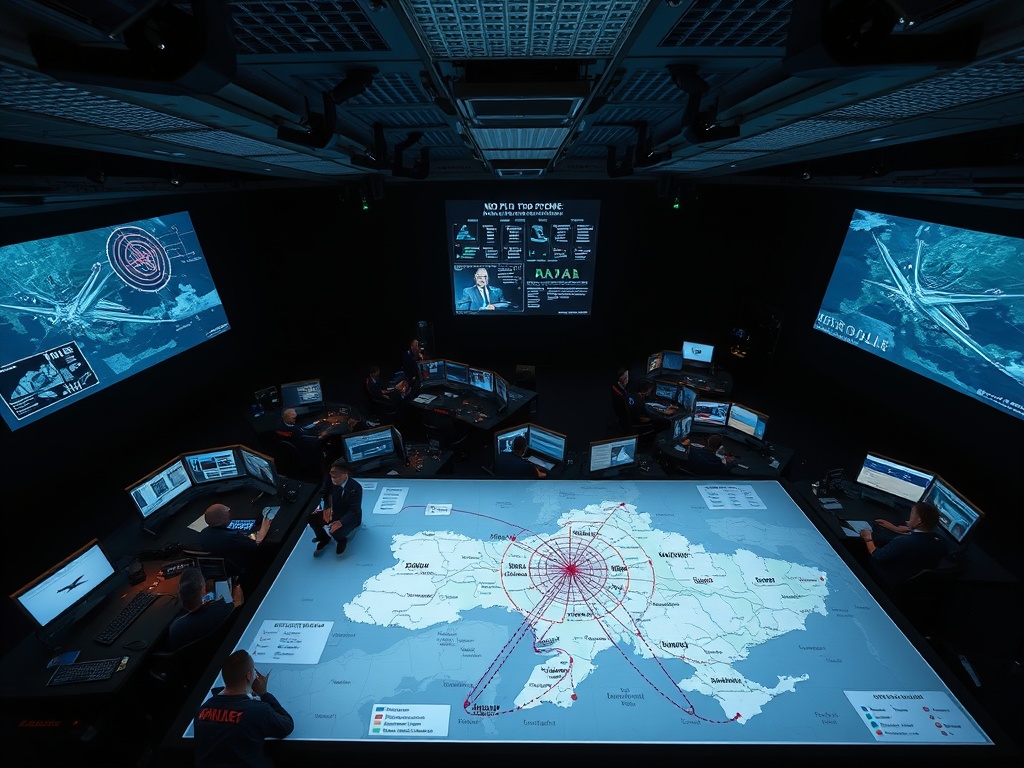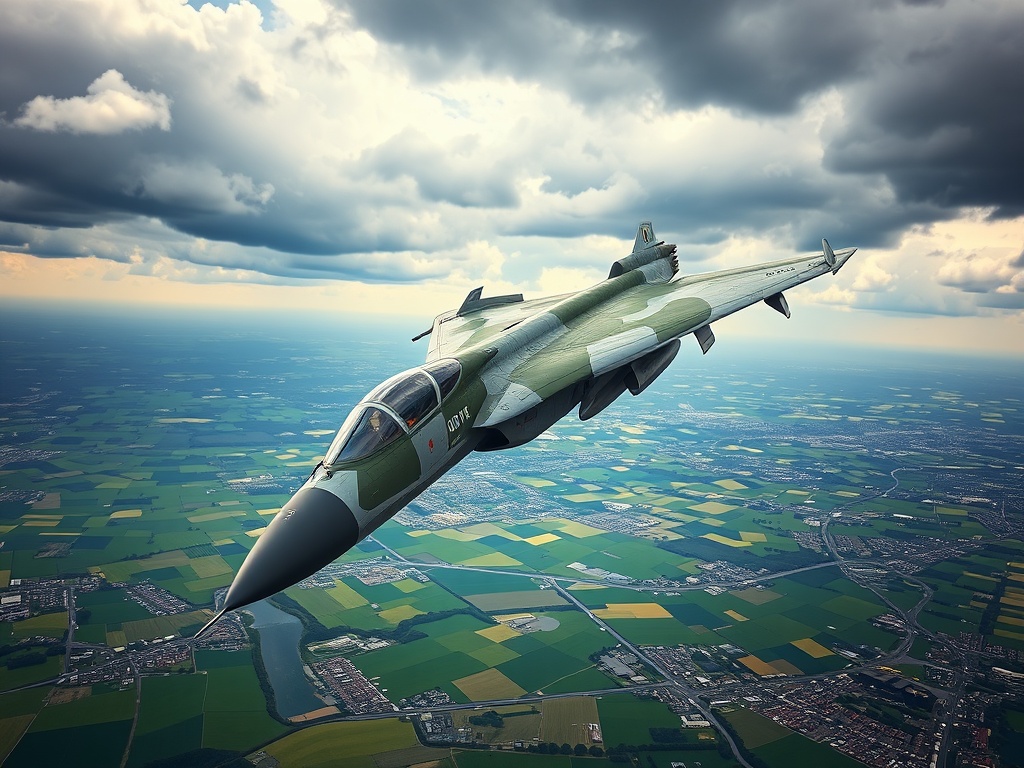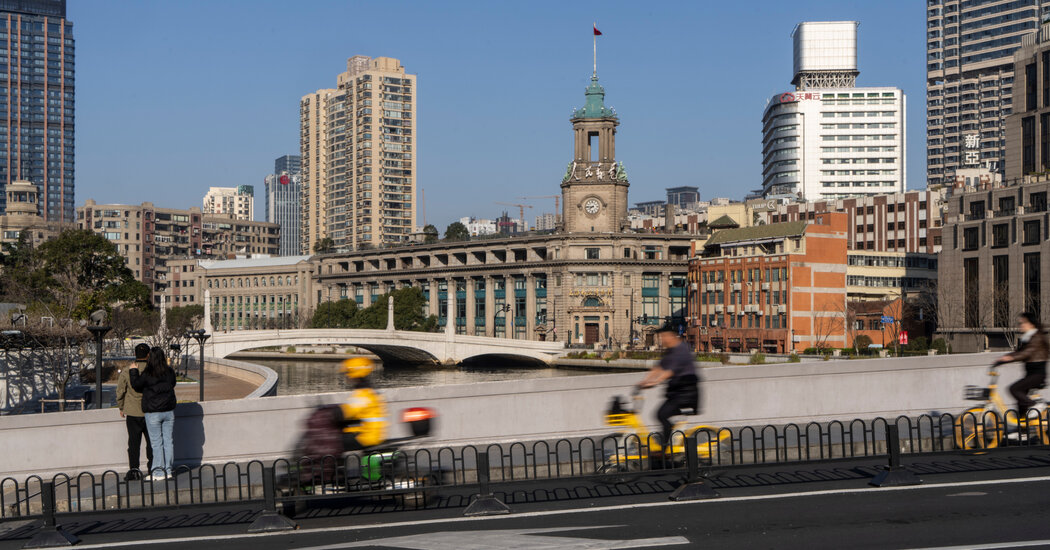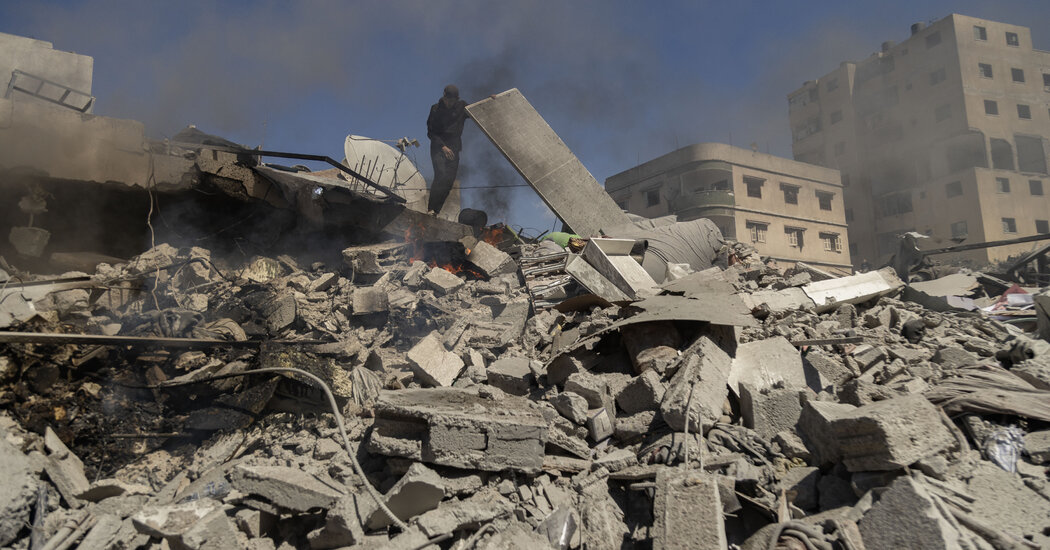Patrolling a No-Fly Zone: A Complex Challenge for the Royal Air Force
Engaging in patrols over foreign territories is not an unfamiliar task for the Royal Air Force (RAF). Similarly, intercepting Russian aircraft has been part of their operational history. However, the prospect of enforcing a no-fly zone over Ukraine presents a challenge that could be unprecedented in the RAF’s recent history. Reports suggest that British Typhoon pilots might be assigned this daunting responsibility in the event of a ceasefire between Kyiv and Moscow.
According to former Tornado pilot Mandy Hickson, the complexity and danger associated with such peacekeeping missions would far exceed those experienced in previous operations over Iraq, Bosnia, or Libya. Having survived a missile attack during her 45 combat missions in Iraq from 1999 to 2002, Hickson understands the stakes involved. She emphasizes that the geopolitical implications of policing the skies over Ukraine would be “completely and utterly” more significant than past conflicts, posing a substantial risk to pilots and exacerbating an already volatile situation.
“One wrong move and it could escalate very quickly,” Hickson warns. “If it came to blows, it would be interpreted as an act of war, likely provoking a response from Russia, leading to heightened tensions between NATO and Moscow.”
The Geopolitical Landscape: A New Paradigm
British and French defense officials are reportedly considering the deployment of an airborne “reassurance force” to Ukraine, should Vladimir Putin consent to end his invasion through contentious negotiations brokered by the United States. This strategic initiative aims to deter Russia from launching further strikes against Ukraine while minimizing the need for increased ground troops from the UK and France.
“The airspace is where we hold a significant advantage over Russia,” a Western official remarked to the Financial Times. The mere presence of these jets could serve as a deterrent against potential violations of a ceasefire, ensuring that Russia refrains from aggressive actions.
However, the feasibility of this plan remains uncertain, especially with Sir Keir Starmer’s upcoming visit to Washington amid growing opposition from Donald Trump towards further support for Ukraine. Meanwhile, Russian Foreign Minister Sergey Lavrov has denounced any involvement of NATO armed forces as “unacceptable.” Yet, if this mission comes to fruition, Hickson cautions that it would be akin to playing the world’s most perilous game of chess.
Mandy Hickson: A Trailblazer in Combat Aviation
Mandy Hickson, née Wells, stands out as one of the pioneering female pilots in the RAF, having been the second woman to fly the Tornado in a predominantly male environment. During her 16-year career, she became the first female pilot to operate the Tornado GR4 ground-attack jet in combat, overseeing the southern no-fly zone over Iraq established post-Gulf War.
“The objective was to hinder hostile aircraft from launching attacks on coalition forces,” Hickson explains. “Iraq’s air defenses were antiquated, with a significant portion of their jets destroyed during the Gulf War, granting us complete air superiority and advanced intelligence.”
In stark contrast to her prior experiences, engaging the Russian military would present a vastly different scenario. “Russia possesses advanced fighter jets like the MiG-31 and Su-35, operated by highly skilled pilots,” she notes. “They boast superior electronic warfare capabilities and long-range S-400 missile systems.”
These surface-to-air missiles represent a unique challenge, with the ability to target aircraft from hundreds of miles away, circumventing the need for Russian jets to approach the Ukrainian border. Any retaliatory strikes would necessitate firing into Russian territory, complicating the operational landscape further.
Hickson also points out the stark difference in military capabilities: “While allegations of weapons of mass destruction were later disproven in Iraq, our adversaries back then lacked nuclear capabilities. Russia, however, does not.”
Challenges of Responding to Attacks in a No-Fly Zone

During one of her missions over Iraq, Hickson experienced a terrifying moment when a surface-to-air missile was launched at her Tornado jet. “It was a heat-seeking missile that managed to lock onto us,” she recalls. “We evaded it by deploying countermeasures in the form of flares, which are designed to mislead infrared sensors, causing missiles to chase the decoys instead of our aircraft.” Fortunately, the missile detonated a few miles away.
Once the incident was reported to an AWACS (Airborne Warning and Control System) aircraft, Hickson and her formation were instructed to return to the target site. “We located the source of the missile attack and successfully destroyed it,” she adds. In Ukraine, RAF pilots would also be required to await orders from their superiors regarding how to respond to threats. However, the ramifications of engaging in military action could be far more severe.
“There were moments when I would fly through clouds of smoke from anti-aircraft artillery,” Hickson continues. “On one occasion, I spotted the location of the artillery, and after adjusting our altitude and direction, I noticed the personnel operating the guns were fleeing.”
She reflects on the situation in Iraq, where the regime incentivized gunners with monetary rewards for shooting down enemy aircraft. “These men were clearly terrified of reprisal attacks,” she recalls. “It was quite tragic.” In contrast, she asserts that the discipline and organization of Russian forces would present a much graver threat.
Assessing the RAF’s Preparedness for Ukraine Missions
Now a motivational speaker and author of An Officer, Not a Gentleman, Hickson is confident in the capabilities of RAF pilots and their aircraft. The Typhoon is a highly versatile multi-role fighter, adept at engaging enemy aircraft and conducting ground attacks. Additionally, the pilots are well-acquainted with intercepting Russian planes, such as the Tu-142 Bear-F anti-submarine aircraft, which two Typhoons recently shadowed over the North Sea.
However, Hickson expresses concerns regarding whether the RAF possesses sufficient jets, personnel, resources, and logistical support to operate effectively in Ukraine while simultaneously defending UK and NATO interests. “It would require a massive logistical undertaking, considering not just the Typhoons, but also fuel, maintenance, and intelligence needs,” she states. “With ongoing defense cuts and a reduction in resources, this could strain our capabilities significantly.”
Air Policing Versus a No-Fly Zone: A Delicate Balance
Former RAF Air Marshal Greg Bagwell, who has commanded missions in the no-fly zone over Libya, notes that the scale of any peacekeeping operation would hinge on the perceived stability of a potential agreement. “If both parties genuinely de-escalate, we might only need between one and two squadrons of aircraft. However, if the situation remains precarious, a significantly larger force involving multiple nations may be necessary to establish a strong deterrent, essentially providing Ukraine with an air force,” he explains.
An RAF source indicated to the Times that an air-policing mission is more likely than implementing a full no-fly zone. This would involve pilots stationed near armed aircraft, poised to take off within minutes to counter any threats, akin to ongoing operations at the RAF’s Quick Reaction Alert bases in Lossiemouth, Scotland, and Conningsby, Lincolnshire. In recent months, Typhoons and F-35 Lightnings have conducted NATO air-policing missions in the Baltic States, Iceland, and Romania, successfully intercepting numerous Russian aircraft.
Hickson wishes the Prime Minister success in his discussions in Washington, as these talks may ultimately influence the level of US support for Ukraine and the potential for RAF peacekeeping missions. “It was incredibly encouraging to hear Keir Starmer affirming the UK’s commitment to Ukraine recently,” she states. “Given President Trump’s unpredictable nature, the outcome could be vital.”
@robhastings.bsky.social




